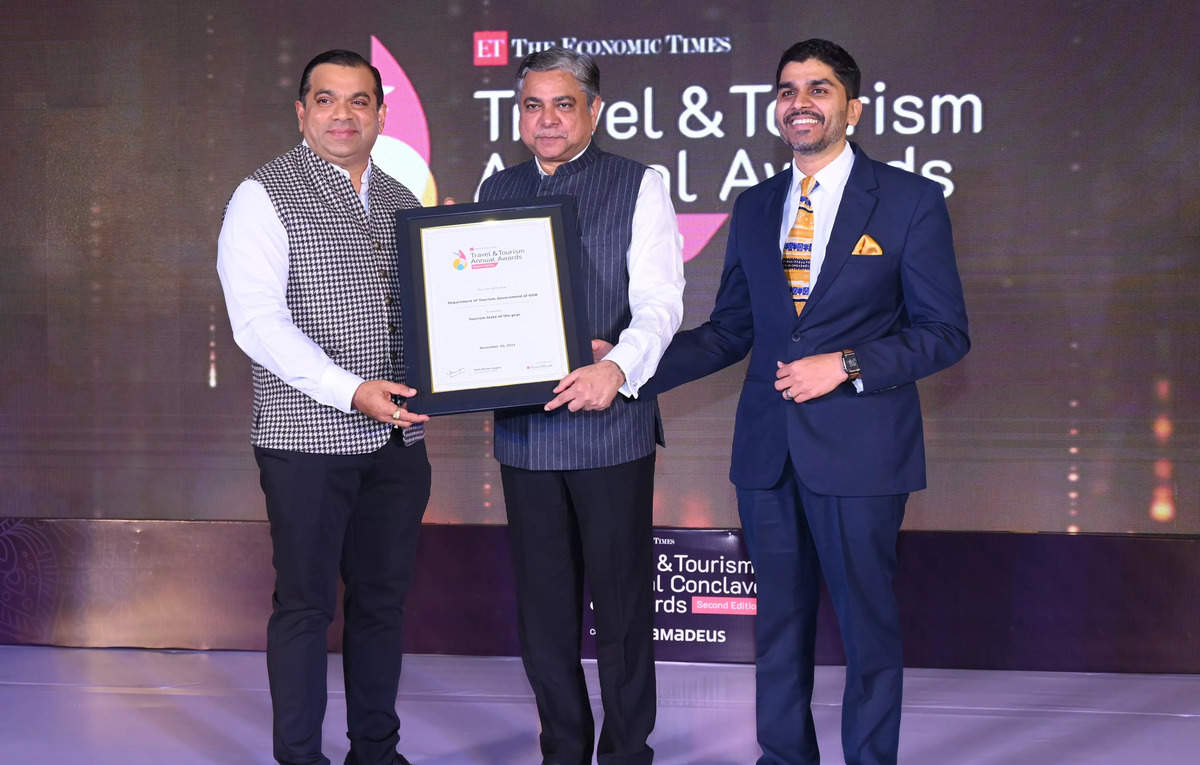
In a bid to transform Goa‘s tourism landscape, the government’s strategic introduction of the Caravan & Homestay Tourism Policies recently has become the catalyst for a local economic renaissance. These initiatives were envisioned not merely as announcements but as transformative tools, aiming to generate employment opportunities and spotlight the state’s diverse offerings, according to Minister for Tourism, IT, E&C and Printing and Stationary, Rohan Khaunte. Now, the state preps to roll out another set of policies that seamlessly align with the vision of promoting Goa beyond beaches. “Our focus has been on integrating these policies effectively. We’re working on implementing them in a way that not only meets objectives but also aligns with industry needs. The response has been encouraging; industry players are supportive and eager to see these policies in action. The goal is not just to announce policies but to ensure their practical realisation, benefitting both the locals and the tourism sector,” added Khaunte who has been closely involved with the policy rollouts.
Goa’s allure for its sun-kissed beaches and vibrant party scene is a well-known narrative, however, there’s a growing need to spotlight the plethora of experiences the state offers beyond its beaches especially post-Covid, Khaunte reiterated. The focus, he said, has shifted towards providing diverse experiences to tourists, culminating in extensive research efforts, while leading to fomaryion of Homestay Policy which is intricately linked to a sustainable tourism model, primarily targeting the rural belt.
Amid ongoing operations of existing homestays, the policy focusing on rural tourism has garnered substantial interest, as per Khaunte. “Plans for new development of homestays are in progress, carefully balancing tourism growth with the preservation of Goa’s cultural heritage,” shared Khaunte.
“In collaboration with Airbnb, we’ve established an MoU ensuring the framework for SOPs, capacity building, and standardised quality, collaboratively working with the government. Post this, we’ve begun receiving applications under this policy and expect to discuss our progress in a month or two.
Additionally, the Homestay policy specifically champions women’s empowerment, encouraging their involvement in running these homestays. Incentives, such as grants up to INR 2 lakh rupees and considerations for utilities under domestic use, not commercial, have been instrumental in supporting these endeavours, as per Khaunte.
Similarly, in a collaborative effort with industry stakeholders, the Caravan Tourism policy is strategically designed to attract suitable investors and investments. “The emphasis remains on responsible promotion and avoiding overexploitation,” the minister told ETTravelWorld.
“Thorough evaluations of applicants are imperative, considering the volume of applications received for both policies. Our aim is to meticulously assess and select the right stakeholders, particularly concerning the caravan segment,” said Khaunte.
While the Homestay and Caravan Tourism Policies have taken centre stage already, the government is gearing up for the introduction of additional policies such as agro-eco tourism, wellness, and adventure, focusing on attracting investments while ensuring transparency and regulation in the tourism landscape.
“For us, simply launching policies isn’t enough. Our ambition is to ensure that all these policies see the light of day by the end of this fiscal year, by March 31. Our primary focus has been on the Homestay and Caravan policies, and while the drafts for the remaining three policies are prepared, timing is critical. We aim not to confuse the market with loads of policies but to orchestrate a strategic and timely release,” shared Khaunte.
For the upcoming year, the tourism department aims to focus on quality tourism and diversify target markets and focus on other key markets. “Understanding tourists’ potential spending, industry insights advocate that tourists are willing to spend more if provided with the right offerings. To tap into these opportunities, we’re exploring uncharted territories, aiming to connect with emerging markets. US, Japan, South Korea, South Asia, and the Middle East are on the radar, alongside domestic travellers from tier two cities. There’s a significant opportunity for us in hosting weddings and MICE events, aligning with the PM’s initiative to host weddings in India,” the minister stated.
Connectivity, he added, stands as another pivotal aspect in meeting the economic and employment objectives within Goa’s tourism industry. “Collaborative efforts with Indigo Airlines have facilitated improved connectivity to several cities like Guwahati, Nagpur, Nashik, Amritsar, Kashi, Varanasi, Ranchi as well as tier two regions, bolstering our outreach. Our efforts align well with the Dekho Apna Desh scheme encouraging tourists visiting India to explore various states within the country,” he stated.
On the international front, Khaunte shared that there are several ongoing discussions with the Ministry of Civil Aviation aimed at securing increased seat allocations for international airlines or exploring cooperative arrangements to attract more visitors from the mentioned emerging markets.
Further, building upon earlier conversations with ETTravelWorld on attracting digital nomads to Goa, Khaunte shared that Goa’s innovative initiative, in collaboration with private operators, for launching seahubs resembling beachfront shacks, is set to kick off next month. “We anticipate digital nomads, who traditionally stay in hotels, utilising our homestays. Domestically, we already host a significant number of digital nomads, approximately 10 to 12,000, predominantly working in creative spheres,” he shared.
Beyond just supporting the local ecosystem, these individuals contribute to capacity building, fostering the narrative of tech tourism in the state, said Khaunte. However, as the state govt looks towards positioning Goa and the country on the international digital nomad map, the primary concern is the International digital nomad visa. “Goa’s aspiration to establish itself as a hub for tech tourism hinges significantly on overcoming these visa challenges. A successful resolution would not only benefit Goa but the entire country,” he shared.
With an optimistic outlook, Khaunte hopes that these challenges will get resolved, potentially post the 2024 elections and asserted that it could significantly augment the country’s capabilities to accommodate more digital nomads.
In the post-Covid era, tourists have shown interest to immerse themselves in the culture and traditions of Goa, he reiterated. “When we talk about #Goabeyondbeaches, we’re encompassing wellness, MICE, spiritual journeys, weddings, food, and sports tourism. The recent surge in global-level sports events has also expanded this perspective. It’s crucial for us to explore these diverse avenues thoughtfully,” he said.
Festivals, he said, also play a pivotal role in promoting the essence of Goa. “While Shigmo and Goa Carnaval have been iconic, we aim to elevate festivals held throughout the year that enrich our cultural tapestry. Celebrations like Sao Jao, Feast of St. John the Baptist, Chikal Kalo, and more contribute to Goa’s historical recognition and spiritual heritage. We plan to scale up these festivities to attract tourists seeking authentic experiences,” the minister added.
Looking ahead, the upcoming year promises an expanded lineup of festivals, he told ETTravelWorld, adding that the visitors can now anticipate a diverse array of events scheduled each month. “It’s an opportunity to explore and experience these cultural celebrations firsthand, aligning with the vision of Goa tourism 2.0,” he concluded optimistically.
Khaunte was sharing the insights with ETTravelWorld during the 2nd edition of the Economic Times Travel & Tourism Conclave & Awards. Present as a Guest of Honour at both the inaugural and 2nd edition, the minister highlighted the ET Travel & Tourism Conclave & Awards’ significance in acknowledging industry innovation, creativity, and dedication. He emphasised that initiatives like these not only applaud accomplishments but also serve as catalysts for ongoing industry excellence, fostering growth and success within the tourism sector and its stakeholders, while also encouraging those in the government sector as well.



